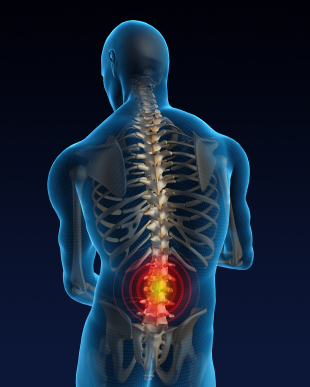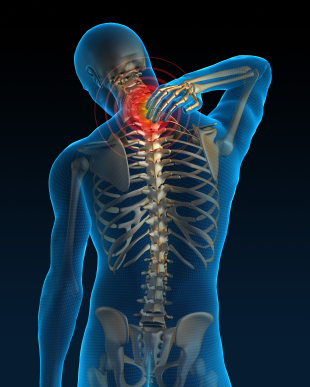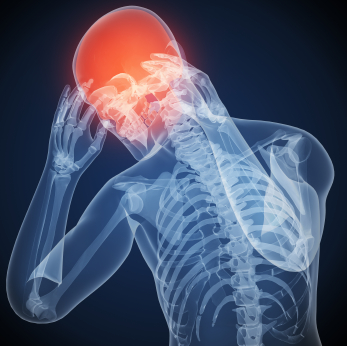Osteopathic Techniques Used
Our practitioners are expert osteopathic physicians with many years of experience in their hands. The following are the treatment methods we commonly use.
- Articulatory Treatment
- Balanced Ligamentous Tension/Ligamentous Articular Strain
- Corticosteroid injections
- Cranial Osteopathy
- Direct Treatment
- Facilitated Positional Release
- High Velocity/Low Amplitude
- Indirect Treatment
- Integrated Neuromuscular Release
- Muscle Energy
- Myofascial Release
- Tissue Treatment
- Trigger Point Injections
- Visceral Manipulative Treatment
Common Conditions We Treat
 Lower Back Pain
Lower Back PainLumbago
Lumbago, or low back pain, is an extremely common problem that afflicts approximately 85% of the United States’ population at some time in life. Although the general complaint of “back pain” is common, its causes are varied and often concomitant in nature. Because of its anatomical relationships and its complex functional role in joining the dynamics of the lower extremities and pelvis to the thorax, the low back often succumbs to both physical and emotional stress.
Pain that seems to originate after a specific incident (i.e. moving a couch or bending over to pick up a young child) may actually represent a culmination of multiple factors which finally push the body beyond its threshold for maintaining internal balance.
Causes of Lower Back Pain
Degenerative discs or herniated discs, except in the case of marked trauma, are usually the result of sustained or repetitive postural, mechanical, and emotional stress over time. It is also important to remember that low back pain does not necessarily mean that the originated cause of the problem is in the lumbar spine or immediate surrounding musculature. Problems such as kidney stones, constipation, leg-length discrepancy, and pelvic strains are often interpreted by the body as “low back pain”, although the originating cause is not actually the lumbar spine itself.
Osteopathy and Lower Back Pain
The osteopathic physicians, using osteopathic manipulation, are especially well-equipped in diagnosing and treating problems of the low back because of their understanding of the intricate functional anatomy of the lumbar spine and its role and relations throughout the body.
 Neck Pain
Neck PainCervicalgia
Cervicalgia, or neck pain, has many causes, and often results from multiple factors rather than any one factor alone.The causes may be skeletal (i.e. osteophyte formation), arthrodial (i.e. degenerative arthritis), muscular (i.e. acute torticollis), ligamentous (i.e. sprain resulting from whiplash) neural (i.e. cervical radiculopathy, dystonia, spinal stenosis, degenerative or herniated discs), or biomechanical (i.e. strained postural dynamics).
Transitional Zone
As a transitional zone connecting the head to the thorax the neck plays a complex role. It must at once allow for dramatic and precise motion while also maintaining adequate protection for the spinal cord, nerves, vasculature, airway, and esophagus. Because of its unique approach to diagnosis and treatment of specific body components in the context of their anatomic and functional relationships, osteopathic manipulative medicine can offer pain relief where other treatment modalities fail.
 Spinal Stenosis
Spinal StenosisCentral Stenosis & Foraminal Stenosis
Spinal stenosis refers to narrowing of either the spinal canal, where the spinal cord is housed (known as central stenosis) and/or narrowing where the spinal nerves that emanate from the spinal cord exit (known as foraminal stenosis). The diagnosis is commonly made because of improved imaging techniques: Computer Tomography scanning and Magnetic Resonance Imaging.
CT Scan & MRI
Here lies the rub – a person may have spinal stenosis seen on CT scan or MRI, but its significance as to their back pain varies. Stenosis may be an incidental finding; it may be a contributing factor; or it may be the root cause of the problem. It is crucial, then, to be evaluated by an experienced physician to determine the correct diagnosis and prescribe the proper treatment. All of this requires having the broadest diagnostic vocabulary because you cannot discover and treat something you don’t know exists.
Osteopathy & Stenosis
Osteopaths have the advantage here as they combine knowing all that the MD knows plus osteopathic structural diagnosis and osteopathic manipulation. This additional knowledge entails an understanding of the intricacies of the spinal anatomy, particularly the inextricable awareness of the interrelations of the related structures. Our approach many times has prevented our patients from undergoing unnecessary aggressive treatments such as epidural steroid injections, decompressive surgery, and spinal fusion- not to mention the costs in terms of pain, lost time, dealing with insurance companies to get approval for coverage, and money.
 Headache
HeadacheCephalgia
Cephalgia, or headache, is commonly grouped into four major classifications: Vascular (migraine and cluster headaches), tension (resulting from sustained muscular contraction), traction and inflammatory (involving tumors, cerebrovascular disease, auto-immune infection), and cranial neuralgias and TMJ dysfunction (Bell’s palsy, trigeminal neuralgia, temporomandibular joint dysfunction).
Headaches and Osteopathy
Although these broad categories represent markedly different disease processes, from an osteopathic perspective they all, to varying degrees, involve the motion of the cranium (or its restriction) and fluid exchange (or its restriction). It is the osteopathic understanding of the motion of the cranial bones and membranous structures, as well as the postural dynamics that influence such motion, that inform the osteopath’s ability to influence this motion with precise, gentle manipulative techniques. Patients who come to us with headaches that have been unsuccessfully treated with medications, or with headaches that have been labeled as “idiopathic”, often find relief with osteopathic treatment. Such treatment is sometimes referred to as osteopathy in the cranial field or cranial osteopathy.